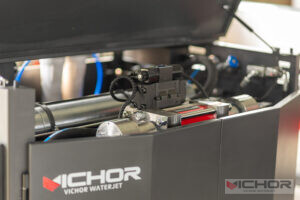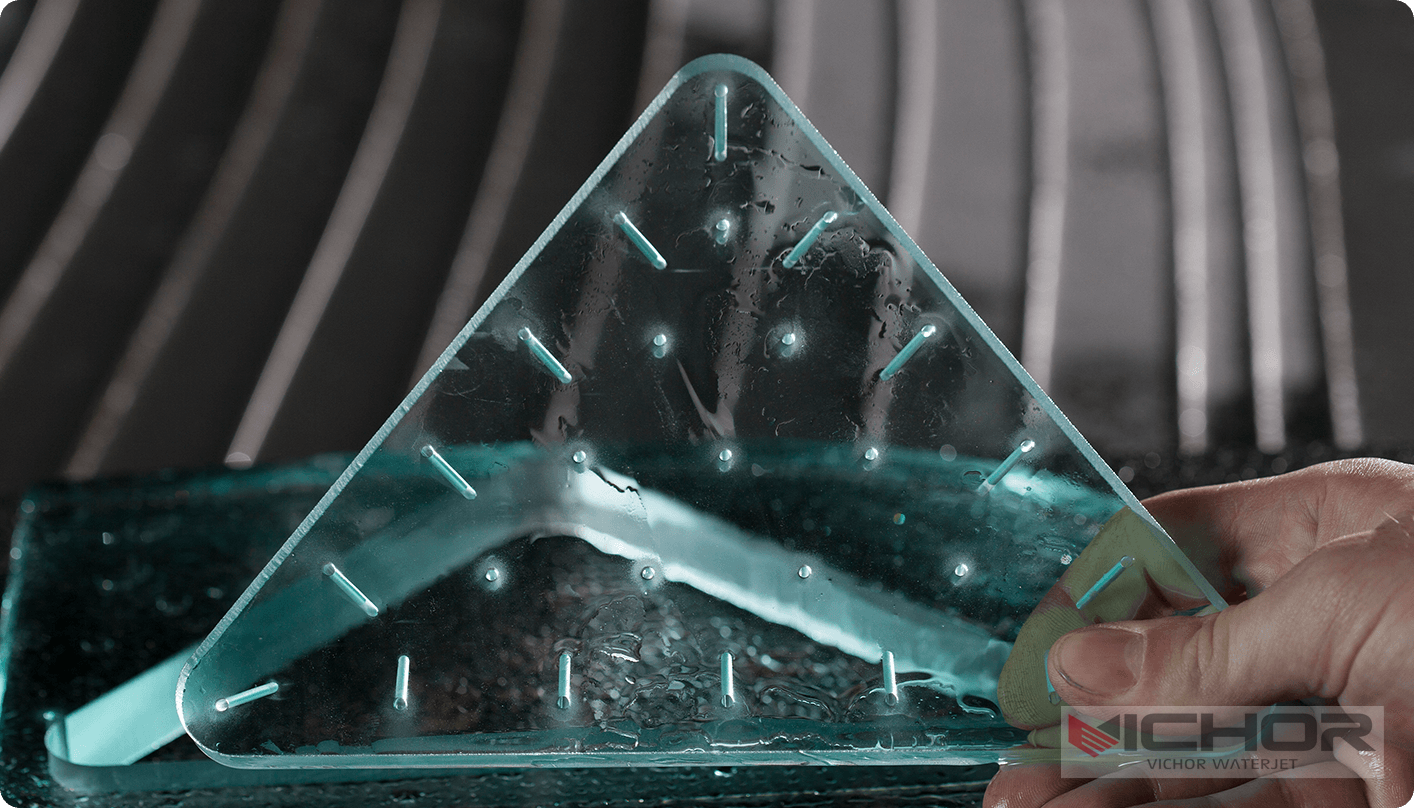
Water Laser Machine: The Ultimate Guide to Precision Cutting in 2025
In the world of modern manufacturing and fabrication, the water laser machine has emerged as a revolutionary tool, combining the precision of laser technology with the versatility of water-based cutting. If you’re involved in industries like aerospace, automotive, or custom fabrication, you’ve likely heard about this equipment. But what exactly is a water laser machine, and why is it gaining so much attention? This comprehensive guide delves into every aspect of water laser machines, from core technology and comparisons to practical applications, cost considerations, and how to choose the right one for your needs. Whether you’re a business owner looking to upgrade your cutting capabilities or a curious professional, this article will provide valuable insights to help you navigate the world of water laser cutting solutions.
What is a Water Laser Machine?
A **water laser machine** is an advanced cutting system that utilizes a high-pressure stream of water, often mixed with abrasive materials, to cut through various materials with exceptional accuracy. Unlike traditional laser cutters that rely on thermal energy, this machine employs a focused water jet, sometimes enhanced with laser-guided precision, to minimize heat-affected zones and reduce material distortion. The core components typically include a high-pressure pump, CNC controls, and a cutting head that directs the water stream. This technology is ideal for handling delicate or heat-sensitive materials, such as composites, metals, and plastics, making it a versatile choice for many industries. By integrating **water jet cutting** with laser-like accuracy, these machines offer a unique blend of efficiency and quality, ensuring clean edges and reduced waste in production processes.
Water Laser Machine vs. Traditional Laser Cutters: A Detailed Comparison
When deciding between a water laser machine and conventional laser cutters, it’s essential to understand their key differences. Traditional laser cutters use concentrated light beams to melt or vaporize materials, which can lead to heat-related issues like warping or discoloration, especially in metals or plastics. In contrast, a **water laser machine** operates with a cold-cutting process, eliminating thermal damage and making it superior for materials that are sensitive to high temperatures. For instance, in applications involving food processing or electronic components, the **water laser** method preserves material integrity without compromising precision. Additionally, **water jet cutting** machines can handle a wider range of thicknesses and materials, including reflective surfaces that might deflect laser beams. However, traditional lasers often excel in speed for thin materials, while **water laser machines** provide better performance for thicker, harder substances. This comparison highlights why many businesses are shifting towards **water laser cutting** for its adaptability and reduced environmental impact, as it uses water and natural abrasives instead of harmful gases.
Applications of Water Laser Machines Across Industries
The versatility of the **water laser machine** makes it suitable for a broad spectrum of applications. In the automotive sector, it’s used for cutting intricate parts from metals and composites, ensuring high precision for engine components or body panels. Aerospace industries rely on **water laser cutting** for manufacturing lightweight materials like titanium and carbon fiber, where accuracy is critical for safety and performance. Art and design fields also benefit, as artists use these machines to create detailed sculptures and installations from materials like glass or stone without cracking. Moreover, in medical device manufacturing, the **water laser machine** enables the production of sterile, precise instruments from biocompatible materials. Other common uses include architectural elements, such as custom tiles or metal frameworks, and consumer goods like electronics housings. By adopting a **water laser** system, businesses can achieve complex designs and prototypes quickly, reducing lead times and enhancing product quality. This wide applicability underscores why investing in a **water laser machine** can be a game-changer for innovation-driven enterprises.
How to Choose the Right Water Laser Machine for Your Needs
Selecting the appropriate **water laser machine** involves evaluating several factors to match your specific requirements. First, consider the material types and thicknesses you’ll be working with; for instance, if you primarily cut thick metals, opt for a machine with higher pressure capabilities and abrasive integration. Next, assess the machine’s precision and speed—look for models with advanced CNC controls and automatic calibration to ensure consistent results. The size of the cutting bed is another critical aspect; larger beds accommodate bigger projects but may require more floor space and investment. Additionally, evaluate the **water laser** system’s maintenance needs and operational costs, including water consumption and abrasive usage. It’s also wise to check for safety features, such as emergency stops and enclosed cutting areas, to protect operators. When comparing options, read reviews and seek demonstrations to gauge performance. Ultimately, a well-chosen **water laser machine** can boost productivity and ROI, so take time to research and consult experts if needed. This selection guide aims to simplify your decision-making process, helping you find a **water laser cutting** solution that aligns with your business goals.
Finding Reliable Suppliers and Commercial Services for Water Laser Machines
Navigating the market for **water laser machine** suppliers requires a strategic approach to ensure quality and support. Start by researching reputable manufacturers and distributors online, focusing on those with positive customer feedback and industry certifications. Attend trade shows or webinars dedicated to cutting technologies, where you can see **water laser** demonstrations and network with providers. When evaluating suppliers, inquire about after-sales services, such as training, warranty, and spare parts availability, as these can impact long-term machine performance. Many companies offer leasing or rental options for **water laser machines**, which can be cost-effective for short-term projects or testing. Additionally, consider local suppliers for faster service and reduced shipping costs. It’s also beneficial to request quotes from multiple vendors to compare pricing and features. By thoroughly vetting suppliers, you can secure a **water laser cutting** system that meets your technical and budgetary needs, while minimizing risks associated with poor service or product defects.
Cost and Pricing Factors for Water Laser Machines
The cost of a **water laser machine** can vary widely based on specifications, brand, and additional features. Entry-level models may start around $50,000, while high-end industrial systems can exceed $200,000. Key factors influencing price include the machine’s pressure rating (measured in psi), cutting head technology, and automation level. For example, a **water laser** unit with integrated robotics or advanced software will command a higher price but offer greater efficiency. Operational expenses also play a role; consider ongoing costs for water, abrasives, electricity, and maintenance when budgeting. Leasing or financing options can make **water laser cutting** more accessible, spreading costs over time. To get the best value, analyze your production volume and material requirements—investing in a moderately priced **water laser machine** with essential features might suffice for small businesses, whereas large-scale operations may justify premium models for higher throughput. Remember, while upfront costs are significant, the long-term benefits of reduced waste and increased precision often lead to substantial savings, making a **water laser** a worthwhile investment.
greater efficiency. Operational expenses also play a role; consider ongoing costs for water, abrasives, electricity, and maintenance when budgeting. Leasing or financing options can make **water laser cutting** more accessible, spreading costs over time. To get the best value, analyze your production volume and material requirements—investing in a moderately priced **water laser machine** with essential features might suffice for small businesses, whereas large-scale operations may justify premium models for higher throughput. Remember, while upfront costs are significant, the long-term benefits of reduced waste and increased precision often lead to substantial savings, making a **water laser** a worthwhile investment.
Deep Dive into the Technology and Process of Water Laser Cutting
Understanding the technology behind a **water laser machine** reveals why it’s so effective. The process begins with a high-pressure pump that intensifies water to levels up to 90,000 psi, which is then forced through a small nozzle to create a supersonic stream. In abrasive **water jet cutting**, garnet or other abrasives are mixed into the stream to enhance cutting power for harder materials. The CNC system guides the cutting head along predefined paths, ensuring accuracy down to fractions of a millimeter. One of the standout features of **water laser** technology is its ability to perform 3D cutting and beveling, thanks to multi-axis controls. The process is environmentally friendly, as it generates minimal waste and uses recyclable water in closed-loop systems. Advances in **water laser** machines include real-time monitoring and AI integration for predictive maintenance, reducing downtime. By mastering this technology, operators can achieve complex geometries and fine details that are challenging with other methods. This deep dive into the **water laser cutting** process highlights its innovation and why it’s becoming a staple in precision manufacturing.
Frequently Asked Questions About Water Laser Machines
Q1: What is the primary advantage of using a water laser machine over a standard laser cutter?
A1: The main advantage of a **water laser machine** is its cold-cutting capability, which eliminates heat-affected zones and material distortion. This makes it ideal for sensitive materials like composites, plastics, and metals that could warp or discolor under traditional laser heat, ensuring higher quality and precision in cuts.
Q2: Can a water laser machine cut through any material?
A2: While a water laser machine is highly versatile, it may struggle with extremely hard materials like diamond or tempered glass without specialized abrasives. Generally, it handles most metals, ceramics, stone, and composites effectively, but material thickness and type should be evaluated against the machine’s specifications for optimal performance.
Q3: How much maintenance does a water laser machine require?
A3: Maintenance for a water laser machine typically involves regular checks on the high-pressure pump, nozzle wear, and water filtration system. Depending on usage, abrasive parts might need replacement every few months. Proper upkeep ensures longevity and consistent water laser cutting quality, with many manufacturers providing detailed maintenance schedules.
Q4: Is a water laser machine environmentally friendly?
A4: Yes, a water laser machine is considered eco-friendly compared to many alternatives. It uses water and natural abrasives, reducing chemical waste, and often incorporates water recycling systems to minimize consumption. However, disposal of used abrasives should be managed responsibly to adhere to environmental standards.
Q5: What training is needed to operate a water laser machine?
A5: Operating a water laser machine usually requires basic training in CNC programming and safety procedures, which many suppliers offer. Familiarity with the machine’s software and material handling is essential to maximize efficiency and avoid accidents, so investing in certified courses or on-site training is recommended for new users.
In conclusion, the water laser machine represents a significant advancement in cutting technology, offering precision, versatility, and efficiency across various industries. By considering the insights shared in this guide—from comparisons and applications to costs and technology—you can make an informed decision that enhances your operational capabilities. Embrace the potential of water laser cutting to drive innovation and growth in your projects.
continue reading



